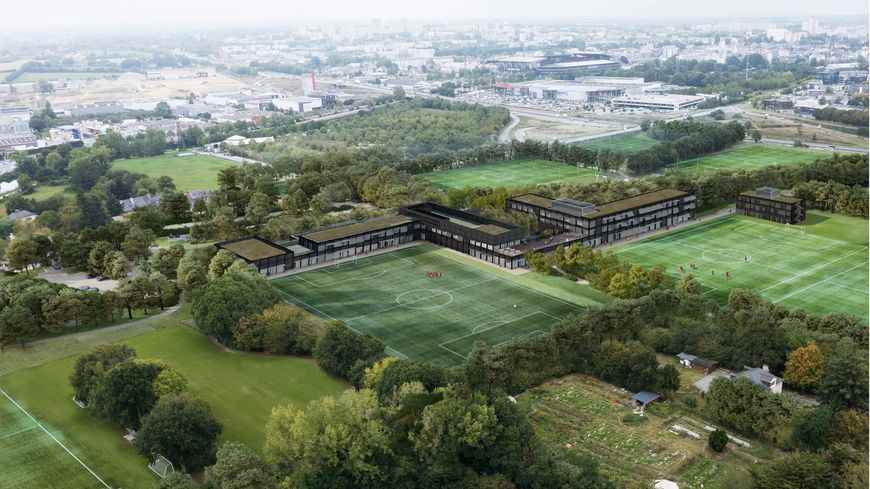It’s a long sea serpent that has just come out of its hole: Stade Rennais presented this Friday its project to expand the Henri-Guérin training center, La Piverdière. It is ultimately a lighter version than initially envisaged that is retained: 15 hectares instead of the 11.4 planned, or just over 3.5 additional hectares. The estimated cost of this work is estimated at 35 million eurosbut it could be revised upwards, due to the global situation and supply difficulties.
– Pierre Antoine Lefort
“This Piverdière project was mentioned four or five years ago. If we carry out this project, it will end in 2025“, underlines Olivier Cloarec, the executive president of Stade Rennais. “You can clearly see that that makes an overall duration of the order of seven years. Today, Stade Rennais has excellent results, both at the professional level and at the training level, but has infrastructures that do not correlate with the results. If we want to continue to be competitive at the national and international level as well as at the training level, it is obvious that we must have better infrastructures and today, we no longer have the time to wait. It is time to move forward, to act and to have infrastructures that match our ambitions and those of our shareholder”.
A project open to the city, assures the club
In detail, this project, at Prévalaye, provides the change from 7 to 8 and a half pitches, as well as a goalkeeper training area (the club will also be able to take advantage of three pitches on the Moulin du Comte site). Three buildings, one for the professionals, the other for the Academy and the administration, and the third for the Boarding school must also see the light of day, for a total area of 9,000m². In particular, the club must also create a five-a-side football pitch, which will be open to the public.

– Rennais Stadium
Faced with questions about the environmental impact, Stade Rennais undertakes to plant 461 trees (for 63 deletions) and to develop bocage hedges. The entire budget for its work is borne by the club and its shareholder.I am very enthusiastic and we are happy to be able to support what is a very ambitious project for La Piverdière, with a project which, in sporting terms, will allow Stade Rennais to develop but also to consolidate its place in the city”. underlines the mayor of Rennes, Nathalie Appéré.
A demonstration by opponents planned before Monday’s city council
“It is a project that is located in a remarkable environment: first of all the proximity to the city and to Roazhon Park, but also a very qualitative natural space, and I believe that we are really united with Stade Rennais on the ambitions -to this project both sporting excellence, environmental excellence, proximity to the city and integration into a natural setting.” The project must be presented Monday, June 27 in City Council, in Rennes.
The opponents of this project must also demonstrate in the afternoon, place of the town hall. “We are in total disagreement with the desire to extend the Stade Rennais Training Center to Prévalaye. Today, they have 12ha in this area, and they want to extend it by another 3.5ha to make a new soccer field, car parks, a warm-up track, a field for the soccer goalkeepers… This extension would be dramatic: removal of natural wasteland (a football field is an artificial ground, therefore a place without life), disappearance of 15 allotment gardens (dating back several decades and which produce well), destruction of a horticultural plot (purchased recently by the city of Rennes, leased to the SRFC)”, explains the Collectif de la Prévalaye, in a press release.
“We know that Stade Rennais’ ambitions to expand will not stop there. We are not in opposition to football, sport and its values. It is the football-business growth model that is not not tenable here. We can no longer afford to sacrifice living“, continues the collective. Stade Rennais is committed to “develop the vegetation (hedges, shrubs, trees, etc.) to preserve the habitat of certain species present on the site after more than 20 years of sporting activities.”
